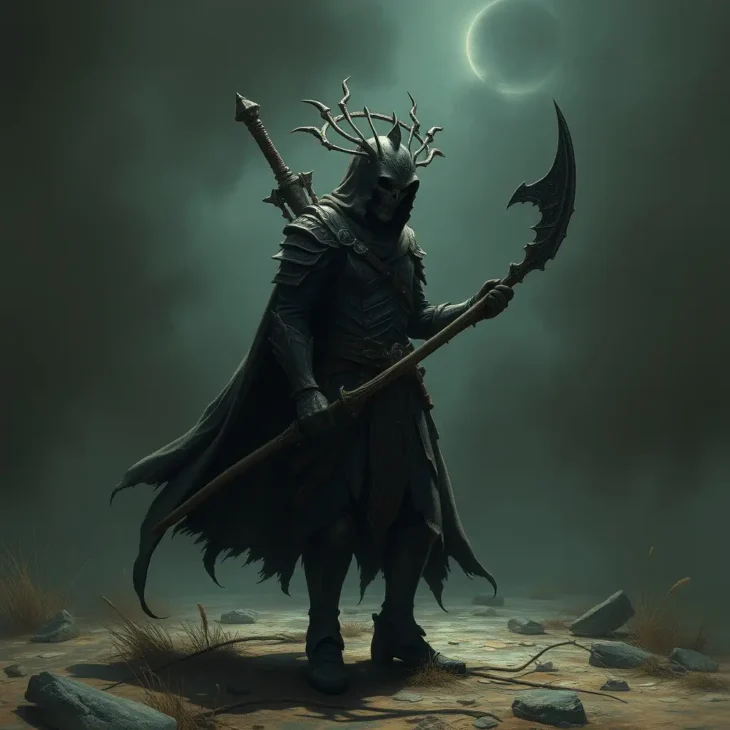“The Haunting of Hill House” – Netflix’s Gothic Masterpiece ⭐⭐⭐⭐½

Many viewers regard “The Haunting of Hill House” as a defining piece in modern gothic horror, captivating audiences with its intertwining narratives of grief and terror. You’ll find the show expertly balances haunting imagery and emotional depth, making it a must-watch for any horror aficionado. As you explore into the eerie history of Hill House and its troubled inhabitants, be prepared to confront your own fears and the lingering impact of family trauma. This series not only terrifies but also resonates deeply, earning its spot in the pantheon of great television.
The Origins of Hill House
The fascinating origins of Hill House extend beyond its eerie facade, inviting you to explore spectral realms where fear and intrigue intertwine. The creation of this iconic haunted dwelling paves the way for a chilling narrative that captivates your imagination and ignites your curiosity about the human psyche, as well as the darker aspects of existence. Delve into its storied past and uncover the layers of history and horror that give Hill House its unparalleled identity.
Shirley Jackson’s Novel
Beside the dramatic visual storytelling of the Netflix series, Shirley Jackson’s original novel lays the foundation for Hill House’s chilling legacy. With its rich, atmospheric prose, the book explores into the psychological turmoil of its characters, leaving an indelible mark on the genre. Jackson intricately weaves suspense and existential dread, immersing you in a world where the very walls of Hill House seem alive, breathing, and watching.
Historical Significance in Gothic Literature
One cannot overlook Hill House’s profound impact on Gothic literature, as it effectively redefines traditional tropes and introduces psychological depth to the haunted house narrative. This shift allows you to experience terror from not only the supernatural but also the human condition, creating a layered understanding of fear.
At the heart of Gothic literature, Hill House stands as a landmark work that blends supernatural elements with an acute focus on psychological themes. It transformed the genre by combining haunting experiences with deep character studies, inviting you to examine the disturbing interplay between sanity and madness. This innovation paved the way for future authors to expand on the genre’s conventions, allowing for a richer exploration of themes such as isolation, trauma, and the complexity of family dynamics. By engaging with Hill House, you unlock a new lens through which to view Gothic fiction’s evolution and its lasting effects on storytelling.
Netflix Adaptation
It’s hard to ignore the impact of Netflix’s “The Haunting of Hill House,” which stands out as a phenomenal adaptation of Shirley Jackson’s classic novel. The series successfully marries horror with complex family dynamics, embodying a gothic atmosphere that haunts you long after the credits roll. With its innovative storytelling and character depth, this adaptation takes familiar themes and reinterprets them for a modern audience, ensuring that both new viewers and dedicated fans find something to appreciate.
Creative Vision of Mike Flanagan
Behind the lens, Mike Flanagan’s creative vision transforms Jackson’s narrative into a multilayered exploration of trauma and grief. His ability to weave emotional depth into the fabric of horror elevates the series, allowing you to connect deeply with the characters’ struggles. Flanagan expertly blends scares with genuine emotional moments, crafting a story that resonates with your personal experiences while keeping you on the edge of your seat.
Changes from the Source Material
With bold twists and a modern context, the show diverges from Jackson’s original storyline. Purists may find some alterations disconcerting, but it allows the adaptation to flourish in its own right. The series expands on character backstories and themes, giving you a richer understanding of their traumas and relationships.
From the shift in character dynamics to the reimagining of certain plot points, Netflix’s adaptation does not shy away from making significant changes. For instance, while the book focuses largely on Eleanor Vance, the series places equal spotlight on the entire Crain family, allowing you to experience the haunting through multiple perspectives. This expanded narrative enhances your connection to each character’s personal struggles with loss, mental health, and fractured family ties, ultimately creating a more immersive experience that diverges from the original material while retaining its core essence.
Themes of Trauma and Grief
Assuming you dive deep into “The Haunting of Hill House,” you’ll discover that it artfully explores the lingering effects of trauma and grief. The characters’ experiences unveil how past horrors infiltrate their present lives, creating a haunting tapestry where emotional pain is as palpable as the supernatural elements. This series brilliantly illustrates that the impact of loss transcends time, blurring the lines between the living and the dead. Thus, it reaffirms that grief is not just an emotion but a force that shapes your very being.
Family Dynamics
By delving into the family dynamics of the Crains, you will recognize how complex relationships fuel the narrative. The siblings are intertwined by shared trauma, each processing their experiences differently, which leads to both connection and conflict. Their interactions highlight the struggle between love and resentment, revealing how familial bonds can be simultaneously a source of strength and vulnerability.
Psychological Horror
Behind the eerie visuals and haunting score, you will find that “The Haunting of Hill House” masterfully employs psychological horror to echo its themes of trauma. The show’s real terror lies not in jump scares but in the characters’ internal battles with their fears and regrets, showcasing how the darkest corners of your mind can often be more terrifying than any ghost. This nuanced approach invites you to reflect on your own fears, creating an unsettling atmosphere that resonates long after the credits roll.
The psychological horror within the series effectively blurs the lines between reality and illusion, making you question what is truly haunting the Crain family. The deeply-rooted emotional scars manifest in their encounters with the supernatural, revealing how unprocessed trauma can warp perception. As past memories resurface, you can sense the palpable dread that grips each character, as haunting visions are intertwined with their mental states. This unique blend of psychological and supernatural horror proves that the real terrors often lie within, challenging you to confront your own buried fears.

Cinematic Techniques
Now, as you dive deeper into “The Haunting of Hill House,” it’s important to appreciate the innovative cinematic techniques that elevate the storytelling. The series masterfully employs a combination of long takes, subtle camera movements, and dynamic framing to immerse you in the eerie atmosphere of Hill House. The seamless transitions between past and present amplify the emotional weight of the narrative, effectively drawing you into each character’s struggle. This meticulous craftsmanship transforms simple scenes into haunting visual experiences that linger long after the credits roll.
Visual Aesthetics
With its stunning visual aesthetics, “The Haunting of Hill House” captures the unsettling beauty of both the mansion and its inhabitants. The color palette, predominantly muted tones, creates a chilling contrast that enhances the atmosphere. Symbolic elements, such as shadowy corners and intricate wallpaper, serve to evoke a sense of dread and claustrophobia, reflecting the characters’ internal turmoil. This attention to visual detail not only establishes a gothic ambiance but also invites you to explore the emotional undertones that lie beneath the surface.
Sound Design and Music
An important element that enhances “The Haunting of Hill House” is its exceptional sound design and haunting score. The unsettling audio landscape expertly manipulates your emotions, with sounds that echo the characters’ fears and experiences. From the creaking floorboards to the chilling whispers, every auditory detail pulls you deeper into the unsettling world of Hill House.
Cinematic sound design plays a pivotal role in the overall impact of the series. The use of dynamic silence amplifies moments of tension, forcing you to lean in closer, while ambient noises create a sense of foreboding that envelops the viewer. Coupled with the haunting score, composed by the talented The Newton Brothers, each musical cue heightens the emotional stakes, making moments both nostalgic and terrifying. This masterful blend of sound immerses you in a richly layered psychological experience, allowing the horror to resonate on a profoundly personal level.
Character Analysis
Many characters in “The Haunting of Hill House” showcase complex layers, driving the narrative forward and deepening the emotional resonance. Each family member grapples with their own trauma, reflecting a broader exploration of grief and resilience. You’ll find yourself connecting with their struggles as you uncover the haunting ties that bind them to their past and each other.
The Crain Family
Between the brothers and sisters, the Crain family’s dynamic is laced with tension, love, and unresolved conflict. Each member carries the weight of past experiences at Hill House, shaping their identities and relationships. You’ll witness how their individual traumas unravel as they confront both the psychological and supernatural elements of their shared history.
Supporting Characters
Supporting characters in “The Haunting of Hill House” play pivotal roles in shaping the Crain family’s journey. From the mysterious and haunting figures that linger in Hill House to the friends and caretakers who offer glimpses of normalcy, their presence highlights the family’s struggle against their inner demons and external horrors.
Family friends, professionals, and even spirits serve to amplify the Crains’ challenges. Each supporting character embodies different aspects of reality and horror, reminding you that not all battles are fought alone. The more you learn about them, the clearer it becomes how these interactions exacerbate or relieve the Crains’ tension, emphasizing the importance of connections amidst chaos.
Audience Reception and Impact
Despite initial skepticism surrounding its adaptation of Shirley Jackson’s classic novel, “The Haunting of Hill House” captured the hearts of viewers worldwide. Audiences were drawn to its intricate storytelling, complex characters, and deep emotional resonance, leading to discussions on mental health, family dynamics, and grief. This series has solidified its place as a modern gothic horror that extends beyond mere scares, leaving a lasting impact on your viewing experience.
Critical Acclaim
Across various platforms, “The Haunting of Hill House” received praise from critics for its masterful direction, writing, and performances, particularly from lead actress Victoria Pedretti. Critics noted its exceptional blend of horror and heartfelt drama, commending how it tackled heavy themes while maintaining a chilling atmosphere. Such accolades have reinforced this show’s status as a standout in contemporary horror television.
Cultural Influence
With its unique narrative approach and emotional depth, “The Haunting of Hill House” has significantly influenced modern horror storytelling. The series has set a new standard for how horror can be intertwined with nuanced character studies, inspiring a wave of creators to explore deeper themes in their own works.
Impact extends beyond the screen, creating a buzz within the horror genre that encourages deeper exploration of themes like trauma, loss, and familial relationships. You may find references to the series in various forms of media, from articles to podcasts, showcasing its prominence. Moreover, the show has sparked discussions on the importance of representation and mental health in horror narratives, inviting you to engage with these themes on a personal level. This cultural conversation solidifies “The Haunting of Hill House” as a redefining work that resonates with audiences far beyond its chilling narrative.
Final Words
Hence, “The Haunting of Hill House” stands out as a remarkable achievement in modern gothic storytelling, blending rich character development with spine-chilling horror. As you navigate through its intricate narrative, you’ll find that it deftly explores themes of trauma, loss, and family dynamics, elevating the genre beyond mere scares. Your journey through Hill House is sure to linger, leaving you with profound thoughts and emotions long after the credits roll. This series not only entertains but also invites you to reflect on the complexities of the human experience within a hauntingly atmospheric setting.





